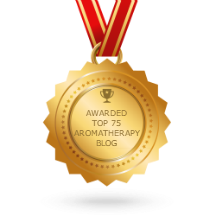 Our immediate answer? "NEROLINA, Melaleuca quinquenervia CT nerolidol...
go read our product description. There is anecdotal evidence that it
is a miticide, and it might be useful in a blend to combat head lice.
Many Australian sources recommend adding it to a shampoo for “children’s
hair problems.”
Our immediate answer? "NEROLINA, Melaleuca quinquenervia CT nerolidol...
go read our product description. There is anecdotal evidence that it
is a miticide, and it might be useful in a blend to combat head lice.
Many Australian sources recommend adding it to a shampoo for “children’s
hair problems.”Since I gave that quick answer, Christi found the research that validates my comment, AND the use of Nerolina in products for "Children's Hair Problems."
http://www.ncbi.nlm.nih.gov/pmc/articles/PMC3480584/
Now, after reading that, I started looking at the math. Because the study did not use Nerolina essential oil, it used nerolidol, the major component in Nerolina Essential Oil. Our Nerolina has 47.5 nerolidol. (See the GC of our current batch here.)
Quoting from the research citation above, "Tea tree oil was more effective than nerolidol against head lice with 100 % mortality at 30 min and 1 % concentration. On the contrary, nerolidol expressed a more pronounced ovicidal activity inducing the failure of 50 % of the eggs to hatch at 1 % concentration after 4 days; the same effect was achieved by using a twice concentration of tea tree oil. The association of the two substances both in ratios 1:1 and 1:2 combined efficaciously their insecticidal and ovicidal effect; in particular, the ratio 1:2 (tea tree oil 0.5 % plus nerolidol 1 %) acted producing both the death of all head lice at 30 min and the abortive effect of louse eggs after 5 days. These results offer new potential application of natural compounds and display a promising scenario in the treatment of pediculosis resistant cases. The development of novel pediculicides containing essential oils could be, in fact, an important tool to control the parasitic infestation."
What does this translate to for us, for our children and grandchildren? It would appear that using twice the amount of Nerolina essential oil as the researchers used of Nerolidol should give the same amounts. In other words, the most effective blend in the research for both live head lice and eggs was a blend of 0.5% tea tree and 1% Nerolidol was the most effective. And our Nerolina oil is almost 50% Nerolina.
 I would work the shampoo into dry hair, and if at all possible, let it stand for 20 minutes. Then I would rinse well. (The reason for applying to dry hair? Water will further dilute the mixture to an unknown level. I don't want to start out with an overly strong blend, so we will apply to dry hair and let stand.)
I would work the shampoo into dry hair, and if at all possible, let it stand for 20 minutes. Then I would rinse well. (The reason for applying to dry hair? Water will further dilute the mixture to an unknown level. I don't want to start out with an overly strong blend, so we will apply to dry hair and let stand.) If the child's hair does well with a conditioner, I might add Nerolina at 2% to either a leave in or wash out conditioner. It also might be an option to use either high proof ethanol or Solubol as a diluent, and add distilled water, and spray the hair daily between shampoos.
I hope you find this information useful.
A reminder, from our website, "Nature’s Gift Disclaimer: The statements made on this website have not been evaluated by the FDA
(U.S. Food & Drug Administration). Our products are not intended to
diagnose, cure or prevent any disease. If a condition persists, please
contact your physician or health care provider. The information provided
by this website or this company is not a substitute for a face-to-face
consultation with a health care provider, and should not be construed as
individual medical advice."


No comments:
Post a Comment